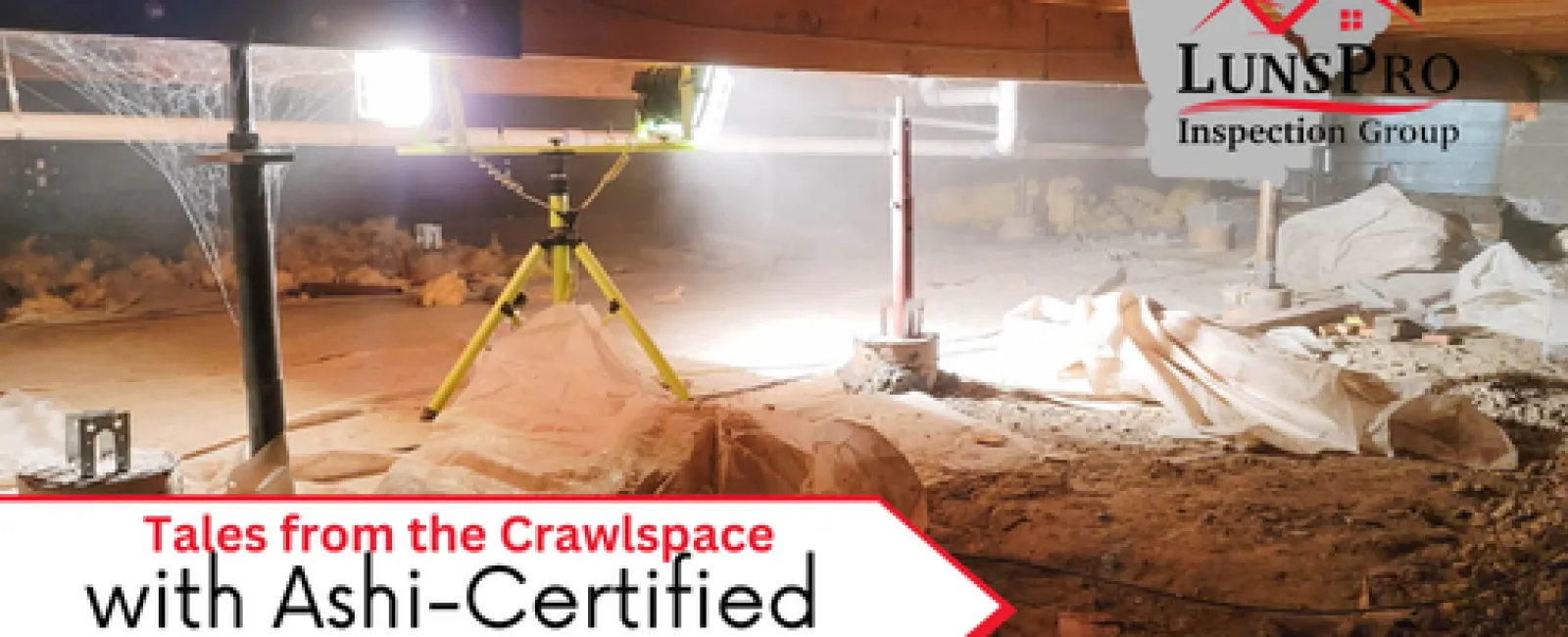Welcome back to another insightful journey with LunsPro Inspection Group, where we delve into the meticulous work of ASHI-certified inspectors like Scott T. Today, we venture into the dark and often neglected realm of the crawlspace, where unsuspecting homeowners may find themselves facing a myriad of structural and safety hazards.
As Scott T. carefully navigates through a recent inspection, we witness firsthand the critical eye and expertise required to uncover hidden issues that could compromise a home's integrity. In this particular crawlspace, the initial glance might deceive the untrained eye, but Scott's experience reveals a laundry list of concerning observations.
Boards Lying on the Ground: The presence of loose boards scattered across the crawlspace floor isn't just an aesthetic concern; it signifies a lack of proper organization and maintenance. These boards can become tripping hazards for anyone entering the space, highlighting the importance of keeping such areas clear and accessible.
Improper Support Structures: Upon closer inspection, Scott identifies boards and cinder blocks haphazardly stuffed between the home's footers and the floor above. This makeshift approach not only looks unsightly but also raises red flags regarding structural stability. Improper supports can lead to uneven weight distribution, sagging floors, and potential structural failure over time.
Wood-to-Floor Contact: One of the most alarming discoveries is the direct contact between wooden elements and the floor. This scenario creates an ideal environment for termite infestation and wood decay, posing a serious threat to the home's structural integrity. Scott emphasizes the need for proper insulation and barriers to prevent such contact and subsequent damage.
Neglected Air Vent: A crucial component of any crawlspace is proper ventilation to prevent moisture buildup and mold growth. However, Scott notices that an air vent lies on the ground, likely disconnected and ineffective. Poor ventilation can lead to excessive humidity levels, inviting mold, mildew, and potential respiratory issues for occupants.
Electrical Hazards: Among the clutter and disarray, Scott identifies exposed electrical wiring running dangerously close to moisture-prone areas. This situation not only violates safety codes but also poses a severe risk of electrical fires or shocks. Proper insulation and securing of electrical components are paramount for a safe living environment.
Insulation Compromise: Insulation materials show signs of damage and displacement, indicating potential energy inefficiency and compromised climate control within the home. Scott notes the importance of adequate insulation to maintain comfortable indoor temperatures and reduce energy costs.
Pest Infestation Traces: While not immediately visible, Scott spots subtle signs of past pest infestations, such as droppings or chewed materials. Addressing underlying pest issues is crucial to prevent further damage and ensure a healthy living environment.
In conclusion, Scott T.'s thorough examination of this crawlspace unveils not just individual issues but a systemic neglect of proper maintenance and safety measures. Homeowners are reminded of the invaluable role certified inspectors play in safeguarding their investments and well-being. Regular inspections and proactive maintenance can mitigate risks, enhance property value, and foster peace of mind in homeownership. Stay tuned for more insightful explorations with LunsPro Inspection Group and our dedicated team of professionals.

